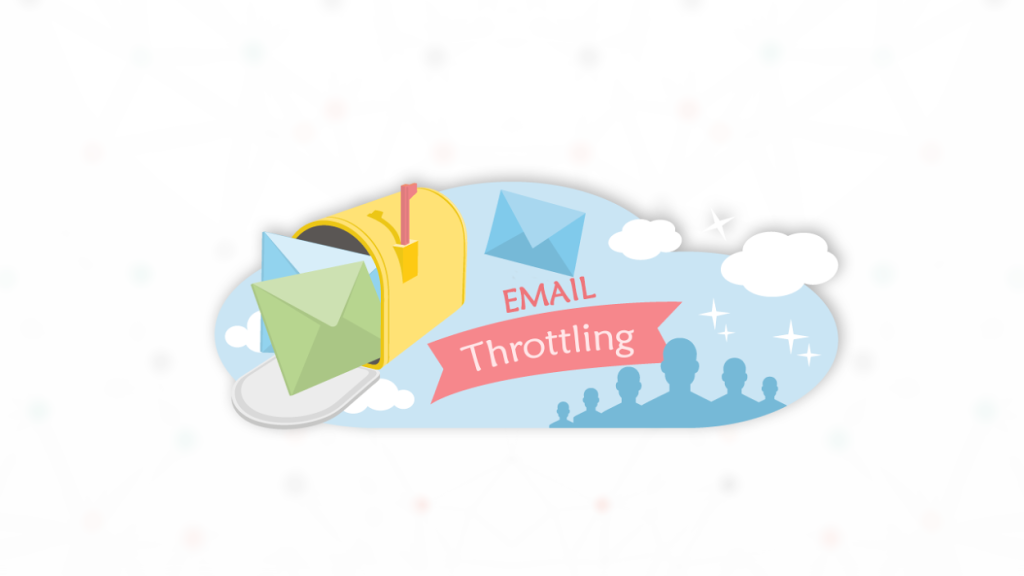In the fast-paced world of email marketing, understanding SMTP (Simple Mail Transfer Protocol) is critical to ensuring your campaigns reach their intended audience. But challenges like email throttling often stand in the way of success. This guide unpacks the concept of email throttling, its effects on email campaigns, and how leveraging SMTP can optimize email deliverability while safeguarding your reputation.
The Role of SMTP in Email Marketing
Why Email Volume Matters
How many emails does your marketing team send daily? If your organization has 20 employees, with each sending an average of 40 emails per day, you’re looking at 800 emails sent daily. Multiply that across industries, and the numbers become staggering — over 347 billion emails are sent daily worldwide, with 69% of companies relying on email marketing.
However, email volumes this high bring challenges. To maintain balance, Email Service Providers (ESPs) often throttle email traffic, limiting the rate at which emails are delivered. Enter SMTP: the backbone of email communication, ensuring smooth transmission while handling restrictions like throttling.
What Is Email Throttling?
Email throttling occurs when an ESP or Mailbox Provider (MBP) limits the number of emails sent or received from a specific sender or domain.
- SMTP’s Role in Throttling:
SMTP servers monitor and manage the sending rate to maintain deliverability and protect recipient servers. Ramp-up strategies, where new senders gradually increase email volume, are a common SMTP technique to establish trust with ESPs. - Causes of Email Throttling:
- Sudden traffic spikes: Sending bulk emails without prior activity raises red flags.
- Spammy content: Overusing trigger words like “Free” or “Urgent” reduces trust.
- Poor engagement rates: Low open or click-through rates signal ESPs that recipients are uninterested.
- SMTP Authentication for Prevention:
Authenticating domains with SPF, DKIM, and DMARC protocols builds sender credibility, reducing throttling risks.

Email Throttling vs. Deferred Emails
While both result in delivery delays, throttling occurs on the sending server, often due to exceeded limits, while deferrals happen on the receiving server and typically involve retries. SMTP systems handle both efficiently, but understanding the nuances helps optimize campaign strategies.
How Email Throttling Impacts Campaigns
- Delayed Deliveries: Date-sensitive promotions lose relevance if emails arrive late.
- Lower Deliverability Rates: Throttling may divert emails to spam folders, affecting performance metrics like ROI.
- Inconsistent Campaign Results: Monitoring becomes challenging when emails are delayed or blocked.
How to Mitigate Email Throttling with SMTP
- Monitor Sending Limits:
SMTP servers provide insights into sending quotas for different ESPs. Avoid exceeding these limits to maintain smooth workflows. - Gradual Volume Increases:
Use SMTP ramp-up strategies to build trust with ESPs. Start with smaller batches and scale up gradually. - Dedicated IP Addresses:
Sharing IPs with others can hurt your reputation. A dedicated SMTP server allows better control over your sending practices. - Engage Subscribers Effectively:
SMTP systems track email engagement, helping identify inactive users and refine email lists for improved results. - Authenticate Your Domain:
Secure your domain with SMTP authentication protocols like SPF and DKIM, which boost credibility and minimize spam triggers.

Read more:
- 10 Best SMTP Testing Tools for Email Security in 2024
- SMTP (Simple Mail Transfer Protocol): Servers and Sending Emails
- Everything You Need to Know About SMTP Security
Email throttling poses significant challenges, but SMTP can be your ally in overcoming these hurdles. By understanding the intricacies of throttling and leveraging the power of SMTP to monitor, authenticate, and optimize your sending practices, you can improve email deliverability and campaign ROI. Remember, every email matters — and with the right strategies, each one can make a meaningful impact.